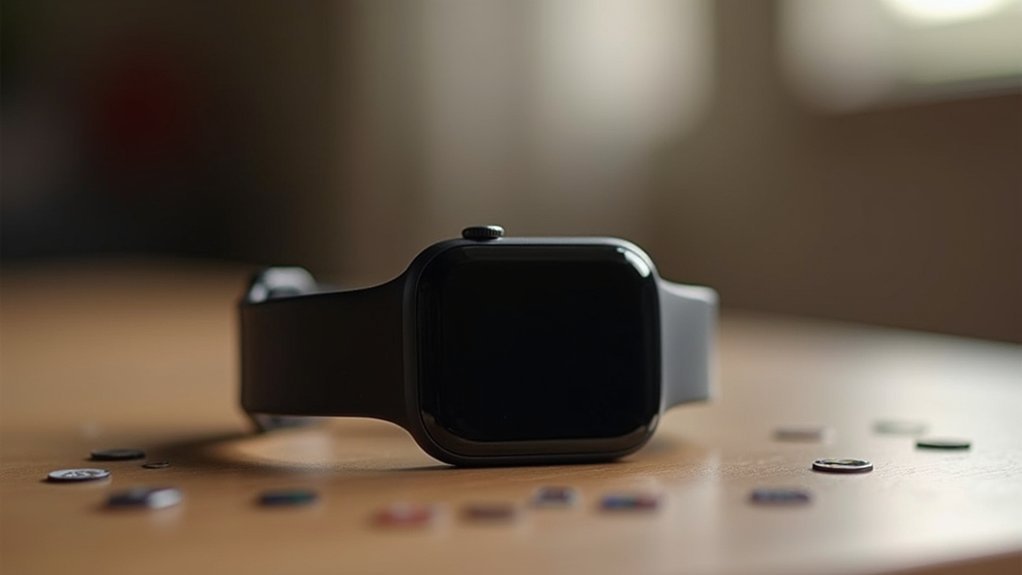You’ve got three excellent open source smartwatch OS options to choose from. AsteroidOS stands out as a mature Linux-based platform supporting devices like Fossil Gen 4 models, offering essential apps and advanced customization through standard Linux technologies. Project Airframe OS provides an ESP32-S3 development platform with modular design and wireless charging capabilities. Community-driven alternatives like Open-SmartWatch Project deliver extensive hardware and software blueprints for maximum flexibility and transparency, though you’ll discover important considerations about app ecosystems and stability.
Asteroidos: Linux-Based Smartwatch Platform With Advanced Customization

AsteroidOS stands as a compelling Linux-based alternative for smartwatch enthusiasts seeking complete control over their wearable devices.
You’ll find this open-source operating system built on the robust Linux kernel, utilizing Qt5 and QML for efficient app development. Since 2015, over 100 developers worldwide have contributed to its evolution, creating a platform that prioritizes user autonomy and data transparency.
You can install AsteroidOS on various devices, including the Connect Watch and certain Fossil Gen 4 models.
The system offers essential apps like agenda, alarm clock, calculator, and weather forecast. You’ll appreciate the advanced customization capabilities enabled by standard Linux technologies, plus the ability to run Docker and other sophisticated features.
The active community encourages contributions, ensuring continuous development and innovation. Before installation, you should consult the FAQ page to understand the specific capabilities and limitations for your chosen smartwatch model.
Project Airframe OS: ESP32-Powered Development Platform for Hardware Enthusiasts
While traditional smartwatch platforms limit your hardware experimentation, Project Airframe OS opens up extensive possibilities through its ESP32-S3 dual-core foundation.
You’ll get access to a 240 MHz Xtensa LX6 processor with 4MB RAM and 8MB Flash, plus an optional NXP i.MX 8 Quad upgrade with 8GB DDR4 RAM. The 240x240px touch display connects to thorough peripheral interfaces including SPI, I2S, UART, I2C, and ADC/DAC converters.
You can develop using Arduino IDE with C/C++ or switch to MicroPython for rapid prototyping. The modular design lets you swap components and integrate various sensors.
Hardware security features include AES/SHA/RSA accelerators, secure boot, and flash encryption. The platform includes wireless charging capability for convenient power management without cables. This open-source platform encourages community-driven development, making it ideal for creating custom IoT wearables.
Community-Driven Open Source Alternatives for Maximum Flexibility

When you’re seeking maximum flexibility in smartwatch development, community-driven open source alternatives deliver unprecedented customization opportunities that proprietary platforms simply can’t match.
AsteroidOS stands out as a prime example, utilizing a customized Linux kernel that you can modify extensively. The Open-SmartWatch Project takes this further by providing complete hardware and software blueprints for building your own devices.
These platforms thrive on collaborative development, where you’ll find active communities contributing code, documentation, and support through platforms like GitHub.
You’ll benefit from transparent development processes that enable better security auditing and rapid bug fixes.
While you might encounter challenges like limited app ecosystems and occasional stability issues, the cost-effectiveness and innovation potential make these alternatives attractive for developers prioritizing customization over convenience. Unlike proprietary systems that require seamless integration with specific brand ecosystems, open source alternatives allow you to build cross-platform compatibility from the ground up.
Frequently Asked Questions
How Do Open Source Smartwatch Operating Systems Compare to Proprietary Options Like Watchos?
You’ll get more customization and flexibility with open source options, but you’ll sacrifice the polished app ecosystems, seamless integration, and optimized performance that proprietary systems like watchOS offer.
What Hardware Specifications Are Required to Run Open Source Smartwatch Operating Systems?
You’ll need at least 128MB RAM, 1GB storage, and a low-power processor. Your smartwatch requires Bluetooth or Wi-Fi connectivity, plus a touchscreen display for peak functionality with open-source operating systems.
Are Open Source Smartwatch OS Options Compatible With Ios and Android Smartphones?
You’ll find open source smartwatch OS options work better with Android than iOS. Android supports basic notifications and calls through Bluetooth, while iOS requires unofficial workarounds since no native companion apps exist.
How Secure Are Open Source Smartwatch Operating Systems Compared to Commercial Alternatives?
You’ll find open source smartwatch OSes offer transparent security through inspectable code and fewer hidden backdoors, but they’re often slower to patch vulnerabilities than commercial alternatives with dedicated security teams.
What Programming Languages Are Needed to Develop Apps for Open Source Smartwatch Platforms?
You’ll primarily use C/C++ for low-level development and system programming. QML with JavaScript handles user interfaces, especially on AsteroidOS. Python works for prototyping, while Rust’s emerging for safety-critical applications.
In Summary
You now have three solid open source smartwatch OS options that’ll give you complete control over your wearable experience. Whether you’re drawn to AsteroidOS’s polished Linux foundation, excited about Project Airframe’s ESP32 development possibilities, or prefer exploring community-driven alternatives, you’ve got the freedom to customize everything. Choose the platform that matches your technical skills and goals, then start building the smartwatch experience you’ve always wanted.





Leave a Reply